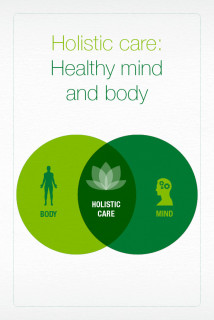Inpatient visits were the lowest, at 8 percent of a general inpatient stay and 3.1 percent for inpatient surgery. Encounters including medical facility care incurred extra facility-level billing costs. (see Figure 3) In addition to the dollar cost of BIR activity, the study also reported the time invested on administration for common encounters. The amounts offered from these sources for unremunerated care go beyond the authors' point quote of $34.5 billion stemmed from MEPS by $3 to $6 billion every year, as shown in the table. Sources of Funding Available for Free Care to the Uninsured, 2001 ($ billions). Federal, state, and local governments support uncompensated care to uninsured Americans and others who can not spend for the expenses of their care, primarily as medical facility ($ 23.6 billion) and clinic services ($ 7 billion).
State and local governmental assistance for uncompensated health center care is estimated at $9.4 billion, through a mix of $3.1 billion in tax appropriations for general hospital assistance (which the Medicare Payment Advisory Committee [MedPAC] deals with as funds available for the support of uninsured patients), $4.3 billion in assistance for indigent care programs, and $2.0 billion in Medicaid DSH and UPL payments (Hadley and Holahan, 2003a). Although medical facilities reported uncompensated care expenses in 1999 of $20.8 billion (predicted to increase to $23.6 billion in 2001), it is hard to determine how much of this expense ultimately lives with the hospitals (MedPAC, 2001; Hadley and Hollahan, 2003a).
Philanthropic support for medical facilities in basic accounts for between 1 and 3 percent of healthcare facility earnings (Davison, 2001) and, because much of this assistance is committed to other functions (e.g., capital enhancements), only a fraction is offered for uncompensated care, approximated to fall in the series of $0.8 to $1 - when does senate vote on health care bill.6 billion for 2001.
Health centers had a personal payer surplus of $17. what is the affordable health care act.4 billion in 1999 (based on AHA and MedPAC reporting). These surplus payments, however, tend to be inversely related to the quantity of free care that hospitals provide. A study of urban safety-net health centers in the mid-1990s discovered that safety-net health centers' case loads typically included 10 percent self-pay or charity cases and 20 percent independently insured, whereas amongst nonsafety-net medical facilities, simply 4 percent were self-pay or charity cases and 39 percent were privately guaranteed (Gaskin and Hadley, 1999a, b).
Our How Much Does Medicare Pay For Home Health Care PDFs

Based upon this reasoning, Hadley and Holahan assume that in between 10 and 20 percent of these surplus profits subsidize care to the uninsured. The issue of cross-subsidies of unremunerated care from personal payers and the effect of uninsurance on the costs of healthcare services and insurance coverage are discussed in the following section.
Have the 41 million uninsured Americans contributed materially to the rate of boost in medical care prices and insurance coverage premiums through cost moving? Health care costs and health insurance https://how-bad-is-cocaine.drug-rehab-fl-resource.com/ coverage premiums have increased more rapidly than other prices in the economy for several years. In 2002, treatment costs rose by 4 (how does electronic health records improve patient care).7 percent, while all prices rose by only 1.6 percent.
Medical insurance premiums rose by 12.7 percent between 2001 and 2002, the largest increase since 1990 (Kaiser Household Foundation and HRET, 2002). These high rates of increases in medical care costs and medical insurance premiums have been associated to a variety of elements, consisting of medical technology advances (e.g., prescription drugs), aging of the population, multiyear insurance underwriting cycles, and, more recently, the loosening of controls on usage by managed care plans (Strunk et al., 2002). If people without health insurance coverage paid the full expense when they were hospitalized or used doctor services, there would appear to be no reason to believe that they contributed any more to the large boosts in healthcare costs and insurance coverage premiums than insured persons.
It is certainly an overestimate to associate all hospital bad debt and charity care to uninsured patients, as Hadley and Holahan acknowledge, since clients who have some insurance coverage however can not or do not pay deductible and coinsurance amounts represent a few of this unremunerated care. Of those physicians reporting that they provided charity care, about half of the total was reported as reduced charges, rather than as totally free care (Emmons, 1995).
The Basic Principles Of You Should Examine All Of The Following Except
Although 60 to 80 percent of the users of openly financed center services, such as provided by federally qualified neighborhood health centers, the VA, and local public health departments are publicly or privately guaranteed, these companies are not most likely to be able to move costs to private payers. Little information is readily available for examining the extent to which private companies and their workers fund the care offered to uninsured individuals through the insurance premiums they pay or the size of this aid.
Utilizing the example of South Carolina, about seven-eighths of the personal subsidies for uninsured care from nongovernmental sources came from philanthropies and other health center (nonoperating) profits, while the staying one-eighth came from surpluses produced from private-pay clients (Conover, 1998). It is difficult to analyze the modifications in health center prices due to the fact that published studies have actually examined private health centers instead of the total relationships among uncompensated care, high uninsured rates, and rates patterns in the healthcare facility services market in general.
One expert argues that there has been little or no expense moving during the 1990s, in spite of the potential to do so, because of "rate sensitive employers, aggressive insurance companies, and excess capacity in the healthcare facility industry," which suggests a relative lack of market power on the part of hospitals (Morrisey, 1996).
For unremunerated care utilization by the uninsured to impact the rate of boost in service prices and premiums, the proportion of care that was unremunerated would have to be increasing as well. There is somewhat more proof for expense moving amongst not-for-profit health centers than amongst for-profit health centers since of their service mission and their location (Hadley and Feder, 1985; Dranove, 1988; Frank and Salkever, 1991; Morrisey, 1993; Gruber, 1994; Morrisey, 1994; Needleman, 1994; Hadley et al., 1996).
Our What Is The Republican Health Care Plan Diaries
Some studies have actually shown that the arrangement of uncompensated care has declined in response to increased market pressures (Gruber, 1994; Mann et al., 1995). The worry about cost moving from the uninsured to the insured population as a phenomenon may be changing to a concentrate on the transference of the concern of uncompensated care from personal hospitals to public institutions due to decreased success of healthcare facilities total (Morrisey, 1996).
